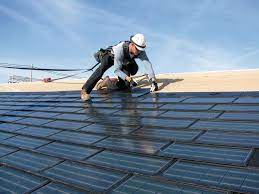A great blog post’s intro tells the reader what they will gain from reading the rest of the content. It could be something as simple as addressing their pain point. A good intro also entices readers by asking a question.

While link juice is an old-school term, the concept of passing value through links is still crucial for search engine optimization. This is because links are an important ranking factor. Contact Big Cheese Agency LLC for professional help.
Link building is one of the most important components of SEO, but it can be difficult to execute properly. It requires patience and consistent effort to build long-term relationships with other content creators. It also requires a good understanding of how to build quality backlinks and stay away from bad practices that can damage your search engine optimization (SEO) strategy.
A link is a hyperlink from another page to your own website, and search engines use these links to crawl the web. Link building involves acquiring these links, which is also known as “backlinks.” These backlinks help your site rank higher in search engine results pages (SERPs).
While many link builders focus on the number of incoming links, this isn’t necessarily a reliable indicator of a website’s quality or trustworthiness. Instead, a website’s domain authority is a more valuable measurement of its relevance and authority.
Domain authority is a measure of how well a website ranks in search engine results pages (SERPs). It’s based on the number and quality of backlinks to that website. Several studies have shown that the number of backlinks is a major factor in SERP rankings, but other factors may be more important for certain types of searches.
In addition to boosting your search engine ranking, a link building campaign can help you build brand visibility and increase organic traffic. By creating and promoting high-quality content, you can establish your brand as an expert in your niche. In addition, link building can help you grow your social media following and build relationships with influencers in your industry.
A good link building campaign will take time and effort, but it can provide great rewards. Using the right tools and strategies can help you achieve your goals faster. The most effective strategies include focusing on relevant keywords and building relationships with other bloggers in your niche. However, you should never buy links or engage in link-building campaigns that are unnatural or spammy. Link-building strategies should be a part of your integrated marketing strategy and must always feel natural. Otherwise, they will be ineffective and possibly damaging to your search engine rankings.
On-page optimization
On-page optimization is one of the most critical aspects of seo, and it includes many different elements that influence your website’s visibility on search engine results pages (SERPs). The term “on-page” refers to all factors that you have control over, including page content, meta tags, header tags, internal links, and more. When you optimize your on-page content, it helps search engines understand what your page is about and demonstrates the value you provide to visitors.
The first step in on-page optimization is to make sure that your content is relevant and well-written. This will help you rank higher in search engine results, but it’s also important for user engagement. You can use tools like Google Analytics to track user behavior on your site and identify areas for improvement. You should also consider implementing heatmap tools like Crazy Egg or Hotjar to see how users are interacting with your website.
Next, you should optimize your title tags and internal linking. These factors can significantly improve your page’s ranking in SERPs. Your title tag should be unique, descriptive, and include your target keyword. It should be no more than 60 characters, and it should accurately reflect the topic of your page. Your internal links should be logically related to your content and be no more than four levels deep. It is important to avoid duplicate content, which can negatively impact your SEO efforts.
Finally, it’s important to optimize your images and videos. This can help your pages rank higher in image searches and increase visitor traffic. It’s also a good idea to add metadata to your photos and videos, as this can help your pages rank higher in searches for specific keywords.
Off-page SEO is another important aspect of SEO, but it is not as important as on-page optimization. Off-page SEO includes things like backlinks and social signals, which can affect your website’s ranking. However, it’s important to remember that off-page SEO can only take you so far. It is important to focus on on-page optimization first, and then work on your off-page strategies.
Content creation
Unlocking link juice can transform your website’s visibility, and it requires a variety of strategies. The number, quality, and relevance of links are all key players. However, the way they’re arranged is also critical. Creating valuable content, acquiring high-quality backlinks, and strategically utilizing internal linking are all effective ways to distribute link equity. In addition, it’s important to monitor the speed at which your site acquires new links, as sudden increases or drops could indicate issues.
The most important factor in determining how a page ranks is its own authority, which is influenced by the number and quality of the inbound links. Search engines consider each link as a vote of confidence, and the more votes a page receives, the higher it will rank. Various tactics have been used to sculpt PageRank, but these have become less effective as Google has rolled out algorithm updates. Nevertheless, many of these methods are still viable in achieving organic rankings.
Getting links from authoritative sites is one of the most effective ways to increase your site’s authority and ranking. These links will pass a lot of link juice, which can help improve your ranking in search engine results pages (SERPs). In addition, the more links a page has, the higher its authority will be.
Internal links are essential for SEO because they can help search engines navigate a website and understand its structure. They can also make a website appear more organized and credible. The best way to optimize internal links is to use keywords and LSI keywords when linking to other pages. It’s also important to choose the right anchor text, which should be contextually relevant to the linked page.
To maximize the impact of your content, you need to get it in front of as many people as possible. This can be done through guest blogging on relevant websites, social media engagement, and participating in community forums. Additionally, creating informative infographics, downloadable whitepapers, and interactive tools can attract attention and help you build trust in the digital world. Moreover, you can boost your online visibility by providing expert insights and solutions through industry blogs.

